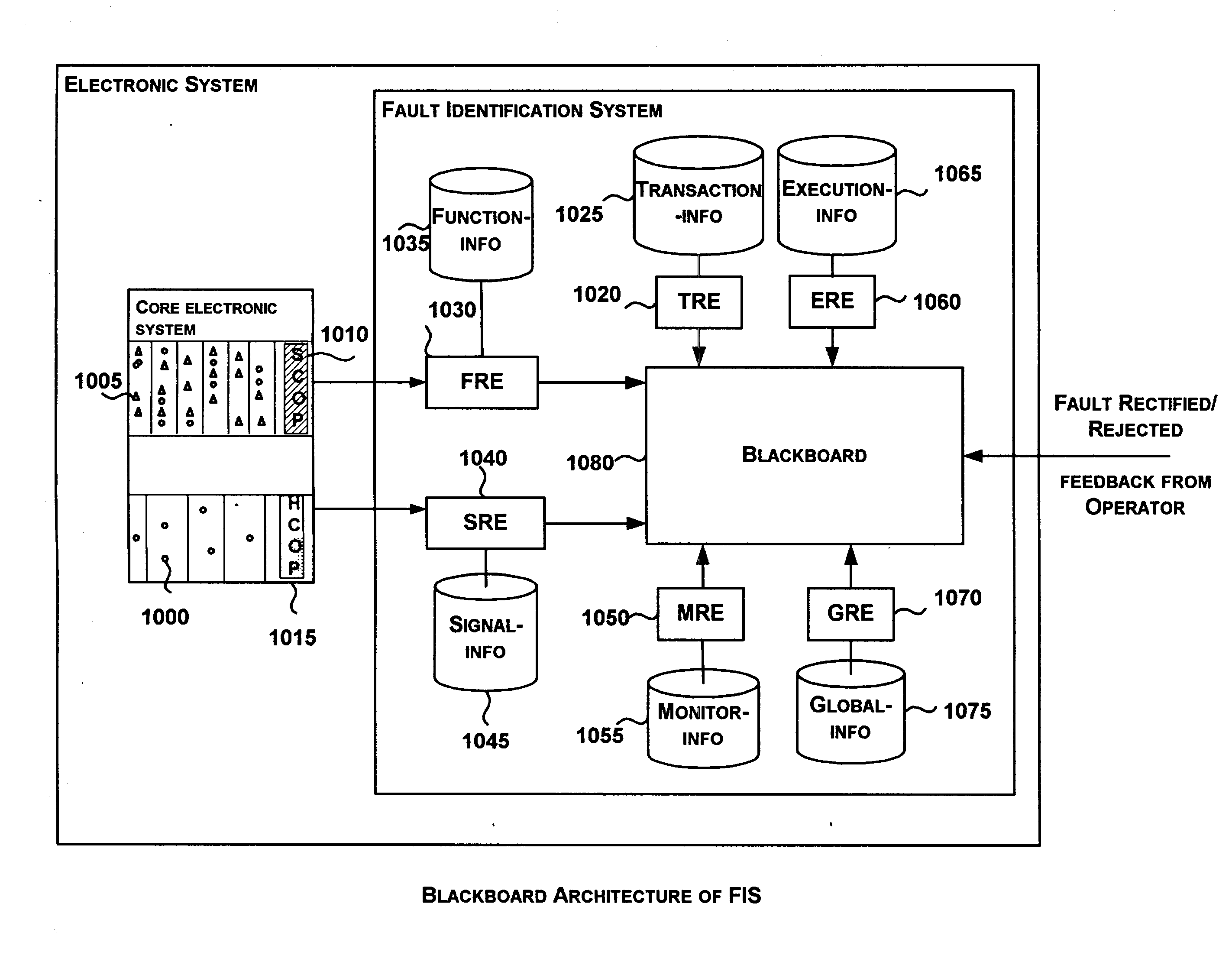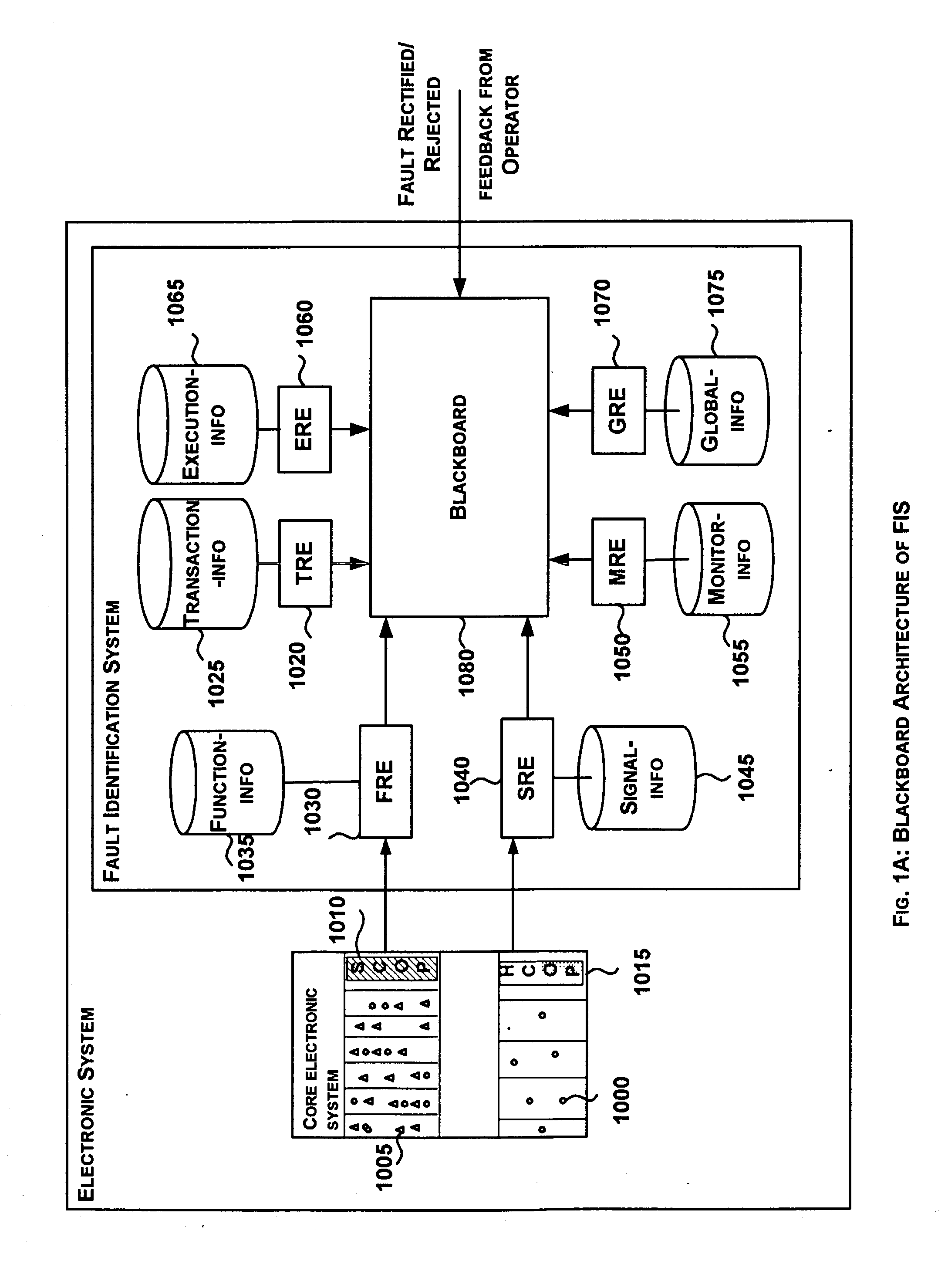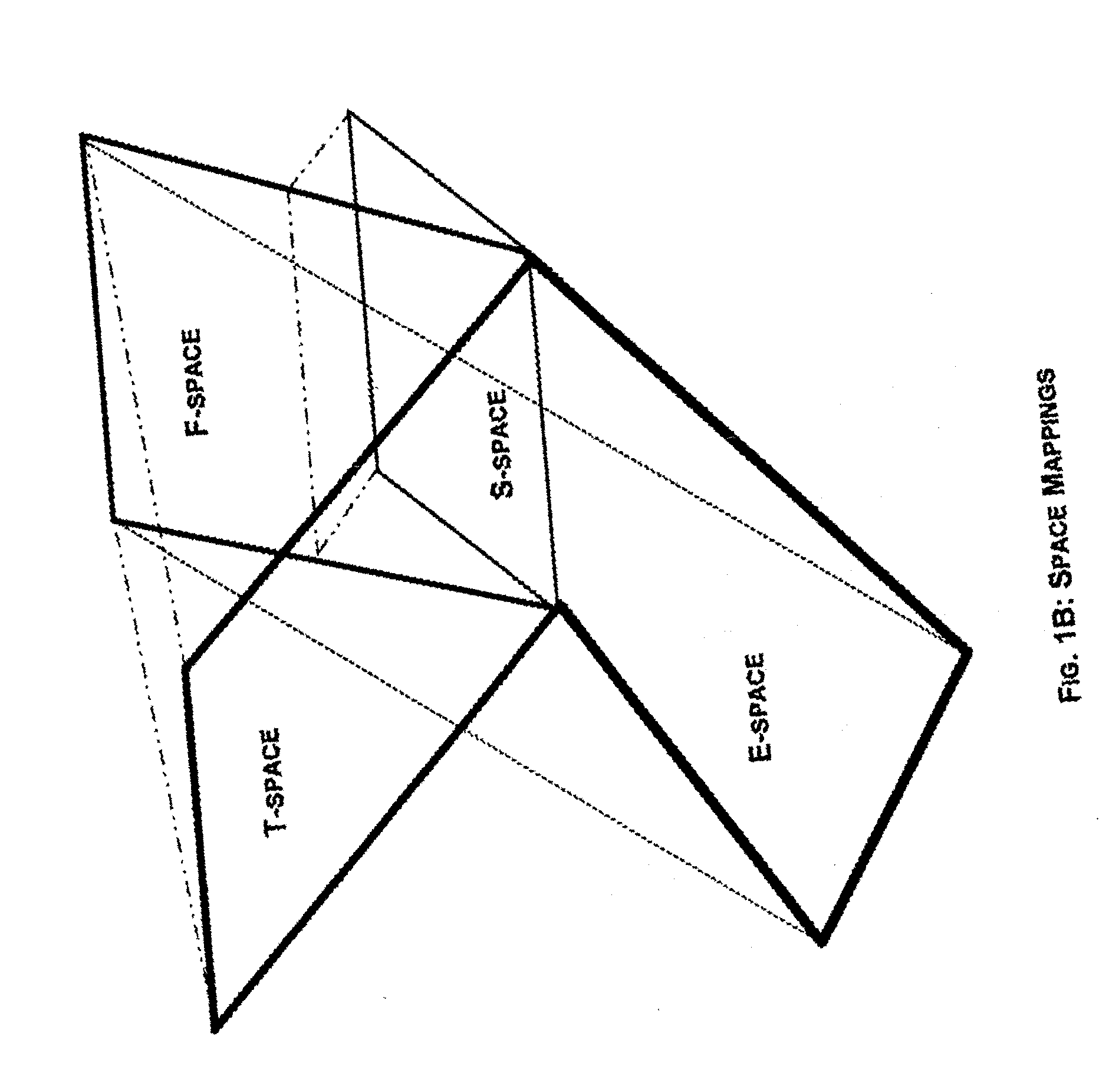System and method for fault identification in an electronic system based on context-based alarm analysis
a technology of context-based alarm analysis and system and method, applied in the direction of digital transmission, electrical equipment, error prevention, etc., can solve the problems of ambiguity and redundancy, difficult diagnostic task of electronic system, accurate fault identification
- Summary
- Abstract
- Description
- Claims
- Application Information
AI Technical Summary
Benefits of technology
Problems solved by technology
Method used
Image
Examples
Embodiment Construction
: Consider the following four sample annotations:
[0117] Annotation 1=[a1, a2, a5*] where a5* indicates that zero or more alarms can get generated
[0118] Annotation 2=[a1, a6+, a8] where a6+ indicates that 1 or more alarms can get generated
[0119] Annotation 3=[a9, a1, a10, a11]
[0120] Annotation 4=[a6, a7]
[0121] On occurrence of first alarm a1, annotations 1, 2, and 3 contain the alarm a1 and hence these are selected for defining the derived segments.
[0122] DS1=[a1] based on comparison with Annotation 1
[0123] DS2=[a1] based on comparison with Annotation 2
[0124] DS3=[a9, a1] based on comparison with Annotation 3 and although alarm a1 has occurred, a9 is missing. TRE analyses the information related to the associated AMV to validate the support for the missing alarm, and based on the support for the occurrence of the missing alarm, the derived segment is updated.
[0125] In case when the alarm received is not the first one in the transaction (2320), TRE checks the generated alarm with resp...
PUM
 Login to View More
Login to View More Abstract
Description
Claims
Application Information
 Login to View More
Login to View More - R&D
- Intellectual Property
- Life Sciences
- Materials
- Tech Scout
- Unparalleled Data Quality
- Higher Quality Content
- 60% Fewer Hallucinations
Browse by: Latest US Patents, China's latest patents, Technical Efficacy Thesaurus, Application Domain, Technology Topic, Popular Technical Reports.
© 2025 PatSnap. All rights reserved.Legal|Privacy policy|Modern Slavery Act Transparency Statement|Sitemap|About US| Contact US: help@patsnap.com



